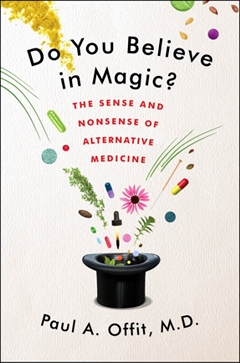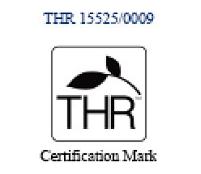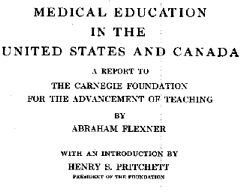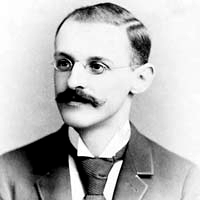DSHEA
The "supplement" industry is a scam that dwarfs all other forms of alternative medicine. Sales are worth over $100 billion a year, a staggering sum. But the claims they make are largely untrue: plain fraudulent. Although the industry’s advertisements like to claim "naturalness". in fact most of the synthetic vitamins are manufactured by big pharma companies. The pharmaceutical industry has not been slow to cash in on an industry in which unverified claims can be made with impunity.
When I saw advertised Hotshot, "a proprietary formulation of organic ingredients" that is alleged to cure or prevent muscle cramps, I would have assumed that it was just another scam. Then I saw that the people behind it were very highly-regarded scientists, Rod MacKinnon and Bruce Bean, both of whom I have met.
The Hotshot’s website gives this background.
"For Dr. Rod MacKinnon, a Nobel Prize-winning neuroscientist/endurance athlete, the invention of HOTSHOT was personal.
After surviving life threatening muscle cramps while deep sea kayaking off the coast of Cape Cod, he discovered that existing cramp remedies – that target the muscle – didn’t work. Calling upon his Nobel Prize-winning expertise on ion channels, Rod reasoned that preventing and treating cramps began with focusing on the nerve, not the muscle.
Five years of scientific research later, Rod has perfected HOTSHOT, the kick-ass, proprietary formulation of organic ingredients, powerful enough to stop muscle cramps where they start. At the nerve.
Today, Rod’s genius solution has created a new category in sports nutrition: Neuro Muscular Performance (NMP). It’s how an athlete’s nerves and muscles work together in an optimal way. HOTSHOT boosts your NMP to stop muscle cramps. So you can push harder, train longer and finish stronger."
For a start, it’s pretty obvious that MacKinnon has not spent the last five years developing a cure for cramp. His publications don’t even mention the topic. Neither do Bruce Bean’s.
I’d like to thank Bruce Bean for answering some questions I put to him. He said it’s "designed to be as strong as possible in activating TRPV1 and TRPA1 channels". After some hunting I found that it contains
Filtered Water, Organic Cane Sugar, Organic Gum Arabic, Organic Lime Juice Concentrate, Pectin, Sea Salt, Natural Flavor, Organic Stevia Extract, Organic Cinnamon, Organic Ginger, Organic Capsaicin
The first ingredient is sugar: "the 1.7oz shot contains enough sugar to make a can of Coke blush with 5.9 grams per ounce vs. 3.3 per ounce of Coke".[ref].
The TRP (transient receptor potential) receptors form a family of 28 related ion channels,Their physiology is far from being well understood, but they are thought to be important for mediating taste and pain, The TRPV1 channel is also known as the receptor for capsaicin (found in chilli peppers). The TRPA1 responds to the active principle in Wasabi.
I’m quite happy to believe that most cramp is caused by unsychronised activity of motor nerves causing muscle fibres to contract in an uncordinated way (though it isn’t really known that this is the usual mechanism, or what triggers it in the first place), The problem is that there is no good reason at all to think that stimulating TRP receptors in the gastro-intestinal tract will stop, within a minute or so, the activity of motor nerves in the spinal cord.
But, as always, there is no point in discussing mechanisms until we are sure that there is a phenomenon to be explained. What is the actual evidence that Hotshot either prevents of cures cramps, as claimed? The Hotshot’s web site has pages about Our Science, Its title is The Truth about Muscle Cramps. That’s not a good start because it’s well known that nobody understands cramp.
So follow the link to See our Scientific Studies. It has three references, two are to unpublished work. The third is not about Hotshot, but about pickle juice. This was also the only reference sent to me by Bruce Bean. Its title is ‘Reflex Inhibition of Electrically Induced
Muscle Cramps in Hypohydrated Humans’, Miller et al,, 2010 [Download pdf]. Since it’s the only published work, it’s worth looking at in detail.
Miller et al., is not about exercise-induced cramp, but about a cramp-like condition that can be induced by electrical stimulation of a muscle in the sole of the foot (flexor hallucis brevis). The intention of the paper was to investigate anecdotal reports that pickle juice and prevent or stop cramps. It was a small study (only 10 subjects). After getting the subjects dehydrated, they cramp was induced electrically, and two seconds after it started, they drank either pickle juice or distilled water. They weren’t asked about pain: the extent of cramp was judged by electromyograph records. At least a week later, the test was repeated with the other drink (the order in which they were given was randomised). So it was a crossover design.
There was no detectable difference between water and pickle juice on the intensity of the cramp. But the duration of the cramp was said to be shorter. The mean duration after water was 133.7 ± 15.9 s and the mean duration after pickle juice was 84.6 ± 18.5 s. A t test gives P = 0.075. However each subject had both treatments and the mean reduction in duration was 49.1 ± 14.6 s and a paired t test gives P = 0.008. This is close to the 3-standard-deviation difference which I recommended as a minimal criterion, so what could possibly go wrong?.
The result certainly suggests that pickle juice might reduce the duration of cramps, but it’s far from conclusive, for the following reasons. First, it must have been very obvious indeed to the subjects whether they were drinking water or pickle juice. Secondly, paired t tests are not the right way to analyse crossover experiments, as explained here, Unfortunately the 10 differences are not given so there is no way to judge the consistency of the responses. Thirdly, two outcomes were measured (intensity and duration), and no correction was made for multiple comparisons. Finally, P = 0.008 is convincing evidence only if you assume that there’s a roughly 50:50 chance of the pickle-juice folk-lore being right before the experiment was started. For most folk remedies, that would be a pretty implausible assumption. The vast majority of folk remedies turn out to be useless when tested properly.
Nevertheless, the results are sufficiently suggestive that it might be worth testing Hotshot properly. One might have expected that would have been done before marketing started, It wasn’t.
Bruce Bean tells me that they tried it on friends who said that it worked. Perhaps that’s not so surprising: there can be no condition more susceptible than muscle cramps to self-deception because of regression to the mean
They found a business partner, Flex Pharma, and Mackinnon set up a company. Let’s see how they are doing.
Flex Pharma
The hyperbole in the advertisements for Hotshots is entirely legal in the USA. The infamous 1994 “Dietary Supplement Health and Education Act (DSHEA)” allows almost any claim to be made for herbs etc as long as they are described as a "dietary supplement". All they have to do is add in the small print:
"These statements have not been evaluated by the Food and Drug Administration. This product is not intended to diagnose, treat, cure or prevent any disease".
Of course medical claims are made: it’s sold to prevent and treat muscle cramp (and I can’t even find the weasel words on the web site).
As well as Hotshot, Flex Pharma are also testing a drug, FLX-787, a TRP receptor agonist of undisclosed structure. It is hoping get FDA approval for treatment of nocturnal leg cramps (NLCs) and treatment of spasticity in multiple sclerosis (MS) and amyotrophic lateral sclerosis (ALS) patients. It would be great if it works, but we still don’t know whether it does,
The financial press doesn’t seem to be very optimistic. When Flex Pharma was launched on the stock market at the beginning of 2015, its initial public offering, raised $$86.4 million, at $16 per share. The biotech boom of the previous few years was still strong. In 2016, the outlook seems less rosy. The investment advice site Seeking Alpha had a scathing evaluation in June 2016. Its title was "Flex Pharma: What A Load Of Cramp". It has some remarkably astute assessments of the pharmacology, as well as of financial risks. The summary reads thus:
- We estimate FLKS will burn at least 40 million of its $84 million in cash this year on clinical trials for FLX-787 and marketing spend for its new cramp supplement called “HOTSHOT.”
- Based on its high cash burn, we expect a large, dilutive equity raise is likely over the next 12 months.
- We believe the company’s recent study on nocturnal leg cramps (NLCs) may be flawed. We also highlight risks to its lead drug candidate, FLX-787, that we believe investors are currently overlooking.
- We highlight several competitive available alternatives to FLKS’s cramp products that we believe investors have not factored into current valuation.
- Only 2.82% of drugs from companies co-founded by CEO Westphal have achieved FDA approval.
The last bullet point refers to Flex Pharma’s CEO, Christoph Westphal MD PhD (described bi Fierce Biotech as "serial biotech entrepreneur"). Only two out of his 71 requests for FDA approval were successful.
On October 13th 2016 it was reported that early trials of FLX-787 had been disappointing. The shares plunged.

On October 17th 2016, Seeking Alpha posted another evaluation: “Flex Pharma Has Another Cramp“. Also StreetInsider,com. They were not optimistic. The former made the point (see above) that crossover trials are not what should be done. In fact the FDA have required that regular parallel RCTs should be done before FLX-787 can be approved.
Summary
Drug discovery is hard and it’s expensive. The record for small molecule discovery has not been good in the last few decades. Many new introductions have, at best, marginal efficacy, and at worst may do more harm than good. In the conditions for which understanding of causes is poor or non-existent, it’s impossible to design new drugs rationally. There are only too many such conditions: from low back pain to almost anything that involves the brain, knowledge of causes is fragmentary to non-existent. This leads guidance bodies to clutch at straws. Disappointing as this is, it’s not for want of trying. And it’s not surprising. Serious medical research hasn’t been going for long and the systems are very complicated.
But this is no excuse for pretending that things work on tha basis of the flimsiest of evidence, Bruce Bean advised me to try Hotshot on friends, and says that it doesn’t work for everybody. This is precisely what one is told by homeopaths, and just about every other sort of quack. Time and time again, that sort of evidence has proved to be misleading,
I have the greatest respect for the science that’s published by both Bruce Bean and Rod MacKinnon. I guess that they aren’t familiar with the sort of evidence that’s required to show that a new treatment works. That isn’t solved by describing a treament as a "dietary supplement".
I’ll confess that I’m a bit disappointed by their involvement with Flex Pharma, a company that makes totally unjustified claims. Or should one just say caveat emptor?
Follow-up
Before posting this, I sent it to Bruce Bean to be checked. Here was his response, which I’m posting in full (hoping not to lose a friend).
"Want to be UK representative for Hotshot? Sample on the way!"
"I do not see anything wrong with the facts. I have a different opinion – that it is perfectly appropriate to have different standards of proof of efficacy for consumer products made from general-recognized-as-safe ingredients and for an FDA-approved drug. I’d be happy for the opportunity to post something like the following your blog entry (and suffer any consequent further abuse) if there is an opportunity".
" I think it would be unfair to lump Hotshot with “dietary supplements” targeted to exploit the hopes of people with serious diseases who are desperate for magic cures. Hotshot is designed and marketed to athletes who experience exercise-induced cramping that can inhibit their training or performance – hardly a population of desperate people susceptible of exploitation. It costs only a few dollars for someone to try it. Lots of people use it regularly and find it helpful. I see nothing wrong with this and am glad that something that I personally found helpful is available for others to try. "
" Independently of Hotshot, Flex Pharma is hoping to develop treatments for cramping associated with diseases like ALS, MS, and idiopathic nocturnal leg cramps. These treatments are being tested in rigorous clinical trials that will be reviewed by the FDA. As with any drug development it is very expensive to do the clinical trials and there is no guarantee of success. I give credit to the investors who are underwriting the effort. The trials are openly publicly reported. I would note that Flex Pharma voluntarily reported results of a recent trial for night leg cramps that led to a nearly 50% drop in the stock price. I give the company credit for that openness and for spending a lot of money and a lot of effort to attempt to develop a treatment to help people – if it can pass the appropriately high hurdle of FDA approval."
" On Friday, I sent along 8 bottles of Hotshot by FedEx, correctly labeled for customs as a commercial sample. Of course, I’d be delighted if you would agree to act as UK representative for the product but absent that, it should at least convince you that the TRP stimulators are present at greater than homeopathic doses. If you can find people who get exercise-induced cramping that can’t be stretched out, please share with them."
6 January 2017
It seems that more than one Nobel prizewinner is willing to sell their names to dodgy businesses. The MIT Tech Review tweeted a link to Imagine Albert Einstein getting paid to put his picture on tin of anti-wrinkle cream. No fewer than seven Nobel prizewinners have lent their names to a “supplement” pill that’s claimed to prolong your life. Needless to say, there isn’t the slightest reason to think it works. What posesses these people beats me. Here are their names.
Aaron Ciechanover (Cancer Biology, Technion – Israel Institute of Technology).
Eric Kandel (Neuroscience, Columbia University).
Jack Szostak (Origins of Life & Telomeres, Harvard University).
Martin Karplus (Complex Chemical Systems, Harvard University).
Sir Richard Roberts(Biochemistry, New England Biolabs).
Thomas Südhof (Neuroscience, Stanford University).
Paul Modrich (Biochemistry, Duke University School of Medicine).
Then there’s the Amway problem. Watch this space.
Despite the First Amendment in the US and a new Defamation Act in the UK, fear of legal threats continue to suppress the expression of honest scientific opinion.
I was asked by Nature Medicine (which is published in the USA) to write a review of Paul Offit’s new book. He’s something of a hero, so of course I agreed. The editor asked me to make some changes to the first draft, which I did. Then the editor concerned sent me this letter.
|
Thank you for the revised version of the book review.
The chief editor of the journal took a look at your piece, and he thought that it would be a good idea to run it past our legal counsel owing to the strong opinions expressed in the piece in relation to specific individuals. I regret to say that the lawyers have advised us against publishing the review. |
After that I tried the UK Conversation. They had done a pretty good job with my post on the baleful influence of royals on medicine. They were more helpful then Nature Medicine, but for some reason that I can’t begin to understand, they insisted that I should not name Nature Medicine, but to refer only to "a leading journal". And they wanted me not to name Harvard in the last paragraph. I’m still baffled about why. But it seemed to me that editorial interference had gone too far, so rather than have an editor re-write my review, I withdrew it.
It is precisely this sort of timidity that allows purveyors of quackery such success with their bait and switch tactics. The fact that people seem so terrified to be frank must be part of the reason why Harvard, Yale and the rest have shrugged their shoulders and allowed nonsense medicine to penetrate so deeply into their medical schools. It’s also why blogs now are often better sources of information than established journals.
Here is the review. I see nothing defamatory in it.
Do You Believe in Magic? The Sense and Nonsense of Alternative Medicine
|
Paul A. Offit Reviewed by David Colquhoun Research Professor of Pharmacology, UCL. |

|
Here’s an odd thing. There is a group of people who advocate the silly idea that you can cure all ills by stuffing yourself with expensive pills, made by large and unscrupulous Pharma companies. No, I’m not talking about pharmacologists or doctors or dietitians. They mostly say that stuffing yourself with pills is often useless and sometimes harmful, because that’s what the evidence says .
Rather, the pill pushers are the true believers in the alternative realities of the “supplement” industry. They seem blithely unaware that the manufacturers are mostly the same big pharma companies that they blame for trying to suppress “natural remedies”. Far from trying to suppress them, pharma companies love the supplement industry because little research is needed and there are few restrictions on the claims that can be made.
Paul Offit’s excellent book concentrates on alternative medicine in the USA, with little mention of the rest of the world. He describes how American pork barrel politics have given supplement hucksters an almost unrestricted right to make stuff up.
Following the thalidomide tragedy, which led to birth defects in babies in the 1950s and 60s, many countries passed laws that required evidence that a drug was both effective and safe before it could be sold. This was mandate by the Kefauver-Harris amendment (1961) in the USA and the Medicines Act (1968) in the UK. Laws like that upset the quacks, and in the UK the quacks got a free pass, a ‘licence of right‘, largely still in existence.
|
In order to sell a herbal concoction in the UK you need to present no evidence at all that it works, just evidence of safety, in return for which you get a reassuring certification mark and freedom to use misleading brand names and labels. |
 Tradional herbal mark |
In the USA the restrictions didn’t last long. Offit describes how a lobby group for vitamin sellers, the National Health Federation, had a board made up of quacks, some of whom, according to Offit (page 73) had convictions. They found an ally in Senator William Proxmire who introduced in 1975 an amendment that banned the Food and Drugs Administration (FDA) from regulating the safety of megavitamins. Tragically, this bill was even supported by the previously-respected scientist Linus Pauling. Offit tells us that “to Proxmire” became a verb meaning to obstruct science for political gain.
The author then relates how the situation got worse with the passage of the Dietary Supplement Health and Education Act (DSHEA) in 1994. It was passed with the help of ex-vitamin salesman Senator Orin Hatch and lots of money from the supplement industry.
This act iniquitously defined a “supplement” as “a product intended to supplement the diet that bears or contains one or more of the following ingredients: a vitamin, a mineral, an herb or other botanical, or an amino acid”. At a stroke, herbs were redefined as foods. There was no need to submit any evidence of either efficacy or even of safety, before marketing anything. All a manufacturer had to do to sell almost any herbal drug or megadose vitamin was to describe it as a “dietary supplement”. The lobbying to get this law through was based on appealing to the Tea Party tendency –get the government’s hands off our vitamins. And it was helped by ‘celebrities’ such as Sissy Spacek and Mel Gibson (it’s impossible to tell whether they really believed in the magic of vitamins, or whether they were paid, or had Tea Party sympathies).
Offit’s discussion of vaccination is a heartbreaking story of venom and misinformation. As co-inventor of the first rotavirus vaccine he’s responsible for saving many lives around the world. But he, perhaps more than anyone, suffered from the autism myth started by the falsified work of Andrew Wakefield.
The scientific community took the question seriously and soon many studies showed absolutely no link between vaccination and autism. But evidence did not seem to interest the alternative world. Rather than Offit being lauded as a saver of children’s lives, he describes how he was subjected to death threats and resorted to having armed guards at meetings.
Again, Offit tells us how celebrities were able to sway public opinion For example (chapter 6), the actress Jenny McCarthy and talk-show hostess Oprah Winfrey promoted, only too successfully, the vaccine-autism link despite abundant evidence that it didn’t exist, and promoted a number of theories that were not supported by any evidence, such as the idea that autism can be “cured” by mega-doses of vitamins and supplements.
Of course vaccines like the one for rotavirus can’t be developed without pharmaceutical companies because, as Offit says, only they "have the resources and expertise to make a vaccine. We can’t make it in our garage". When the Children’s Hospital of Philadelphia sold its royalty stake in the rotavirus vaccine for $182 million, Offit received an undisclosed share of the intellectual property, “in the millions ”.
That’s exactly what universities love. We are encouraged constantly to collaborate with industry, and, in the process, make money for the university. It’s also what Wakefield, and the Royal Free Hospital where he worked, hoped to do. But sadly, these events led to Offit being called names such as “Dr Proffit” and “Biostitute” (to rhyme with “prostitute”) by people like Jenny McCarthy and Robert F. Kennedy Jr. The conspiritorialist public lapped up this abuse, but appeared not to notice that many quacks have become far richer by peddling cures that do not work.
One lesson from this sad story is that we need to think more about the potential for money to lead to good science being disbelieved, and sometimes to corrupt science.
Everyone should buy this book, and weep for the gullibility and corruption that it describes.
I recommend it especially to the deans of US Medical schools, from Harvard downwards, who have embraced “integrative medicine” departments. In doing so they have betrayed both science and their patients.
Abraham Flexner, whose 1910 report first put US medicine on a sound scientific footing, must be turning in his grave.

|

|
Follow-up
30 August 2013
Quack lobby groups got a clause inserted into Obamacare that will make any attempt to evaluate whether a treatment actually works will leave insurance companies open to legal action for "discrimination".
"Discrimination? Yes! We must not allow the government to exclude health care providers just because those providers don’t cure anything."
The latest piece of well-organised corporate corruption by well-funded lobbyists is revealed by Steven Salzberg, in Forbes Magazine. The chaos in the US health system makes one even more grateful for the NHS and for the evaluation of effectiveness of treatments by NICE.
